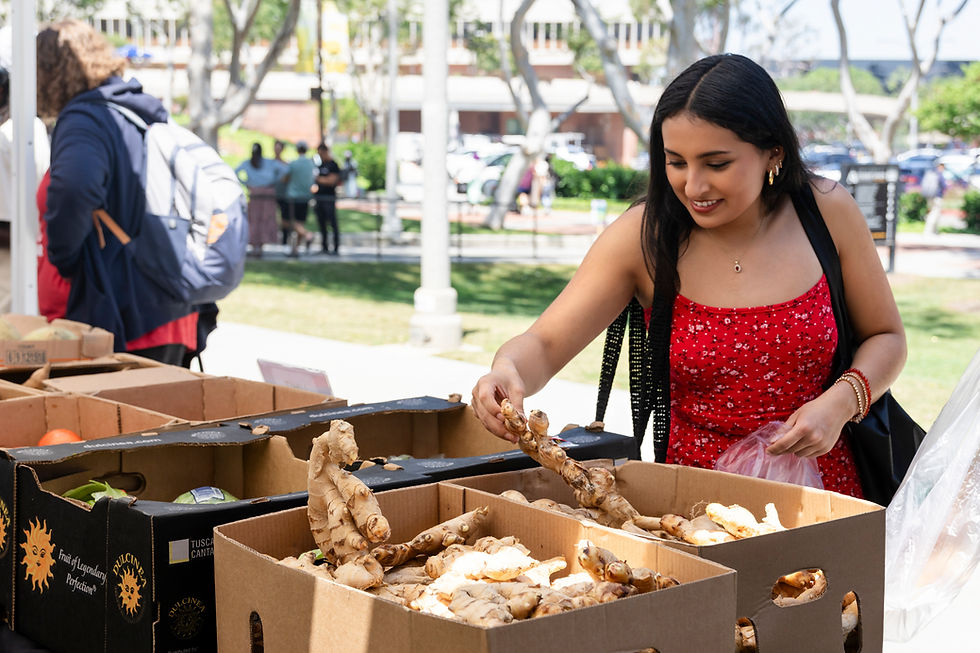College Students Face Multiple Struggles Beyond Grades: A Closer Look
- Karlen Nurijanyan

- Mar 26, 2023
- 3 min read
Updated: Apr 5, 2023

A study conducted in the fall of 2019 found that 39% of college students experienced food insecurity in the past 30 days. According to Feeding America, there is a difference between "hunger" and "food insecurity." Hunger is the feeling of not eating, whereas food insecurity is the inability to access enough resources to find food. Some college students may have the resources for one meal but lack the resources for the next, resulting in an inconsistent diet. Eating consistently and maintaining a healthy diet is second nature to most, and many of us simply cannot imagine life without access to food whenever we want it. However, college students struggle with scarce food, leading to a decline in their grades and mental health. Food is vital for survival, and access to food must be a priority for every college student, in my opinion. As a college student, I feel that food is the very first basic need to make me succeed in college.
We cannot ignore the recent events around inflation and the COVID-19 pandemic. While the pandemic caused the federal government to provide benefits to struggling college students, there is no telling when these benefits may cease. Even before the pandemic, college students who needed assistance did not usually meet the requirements to receive support from the states. Many college students cannot afford healthy foods, and with the current situation of inflation and skyrocketing food prices, grocery shopping is becoming a challenge. For example, prices of eggs, rice, and dairy are surging, and some grocery aisles are slowly becoming areas of window shopping.
Food provides energy for our muscles and brain, and since we need food to survive, college students facing food insecurity may seek different avenues to acquire food. Some may opt for cheaper foods that do not provide adequate nutrients, while others may ration their meals. Regardless of the approach, college students should not have to focus on where their next meal is coming from. Food insecurity should not be an issue for young adults working on their college degrees, yet we face this problem daily. Students skip meals, take hunger naps, sleep in their cars, and all of this in the name of higher education. Can we blame students who drop out to support themselves and their families? Not everyone would agree with me, but let us have our own opinions on campus hunger.
Food pantries are becoming an essential resource for food-insecure college students. This type of outreach is available at many college campuses across the United States; however, their usage varies due to stigma. Many students facing food insecurity do not want to be seen entering or leaving a food pantry. Some students may seek help from their close friends or family instead of using their campus pantry. Even if a student chooses to use their local food bank, these distribution centers often don't solve the food insecurity crisis.
That is not to say that college food pantries don't provide the necessary support. This temporary but essential resource alleviates some of the challenges students face until they get back on their feet. Many students depend on them, and if you see students lining up by the pantry, that means the demand is high, and pantries are doing an incredible job helping their students in need. Many colleges have implemented other avenues of support to complement the pantry programs. For instance, they utilize campus gardens to provide students with healthy food options and as a learning experience. The University of California at Berkeley's goal is just that; they aim to teach students how to grow their food and provide food to students in need.
As you may know, nonprofit organizations also fight against this growing problem. Student LunchBox, for example, partners with local distributors, local farmers, and food banks to provide food to insecure college students in the Los Angeles area. In late 2020, SLB served students from only one university; today, they serve over 45,000 students annually in seven colleges throughout LA. SLB's mission is to rescue unsold produce from various places and distribute it quickly and efficiently before it ends up in landfills. In fact, according to the FDA, 30-40% of food ends up in landfills every year. While changes are happening at the federal level to try and mitigate this issue, nonprofits like Student LunchBox are doing all they can to get food to those who need it most.
By Allison Norberg and Karlen Nurijanyan
If you resonate with our mission and want to be a part of the solution, stay connected and take action! SUBSCRIBE now to receive quarterly updates on how Student LunchBox is transforming lives, fighting college hunger, and empowering students to succeed. Together, we can make a lasting impact!






